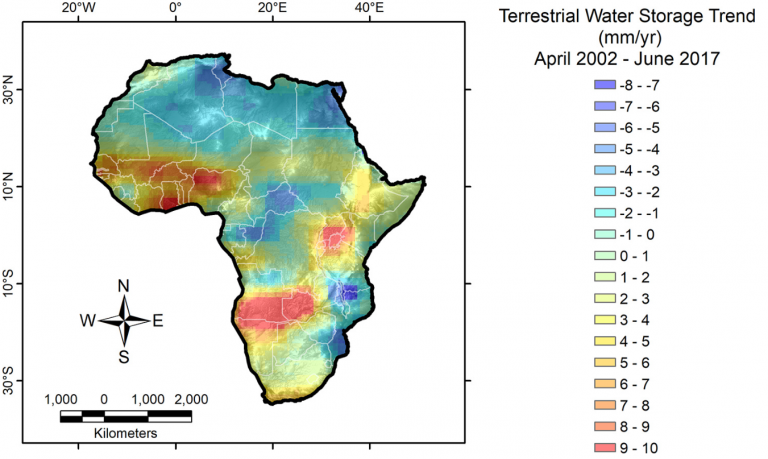- Joined
- Dec 31, 2016
- Messages
- 11,375
- Reaction score
- 2,650
- Gender
- Male
- Political Leaning
- Independent
Africa’s Short term Freshwater Trends Largely Driven By Natural Variability
By P Gosselin on 21. August 2019
A recent study finds that Africa’s freshwater storages are driven by natural variability.
Image: ScienceDirectHat-tip: Mary Brown
The authors examined GRACE satellite data and also found that Central Africa’s water storages are partially controlled by deforestation, and in northern Africa are controlled by groundwater extraction.
What follows is the paper’s abstract, which does not mention anthropogenic climate change:The freshwater resources in Africa are vulnerable to natural variabilities as well as anthropogenic interventions. In this study, temporal (April 2002–June 2017) Gravity Recovery and Climate Experiment (GRACE) data are integrated, in a geographic information system environment, with rainfall, temperature, evapotranspiration, and altimetry remote sensing datasets to monitor the short-term trends in terrestrial water storage (TWS) over the African hydrogeologic systems and to explore their origins. Results show that short-term trends over the African continent are largely driven by natural variability such as changes in rainfall, evapotranspiration, and associated variations in lake levels. Exceptions to this observation include central Africa, where deforestation is found to additionally drive changes in TWS, as well as northern Africa, where TWS changes are dominated by anthropogenic groundwater extraction from fossil aquifers. Findings highlight the need for integrative responses at local, national, regional, and international levels by the African nations to overcome current and future challenges related to freshwater availability in Africa.”
And....



